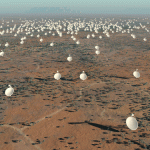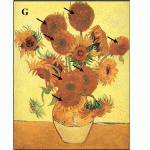
Fires have been in Australia 50 million years longer than previously believed. Image: Shutterstock
A new study is the “˜smoking gun’ for how bushfires transformed the Australian landscape.
Changes in eucalyptus ancestors over 60 million years ago could explain why we have such a dry, fiery continent today. Researchers from the Australian National University believe that bushfires may have appeared in the Australian landscape 50 million years earlier than previously believed, transforming our continent from lush rainforests to dry eucalyptus woodlands.
Professor Mike Crisp, who led the study, says fire was originally believed to have appeared during the Miocene, less than 15 million years before present. “This was the time when the climate became drier worldwide and the fire prone savannah biome expanded”.
However, new evidence from fossilised pollen has shown that eucalypts developed their ability to recover from fire when the landscape of Australia began to change. Professor Crisp and his team traced this adaption back 60 million years, not long after the dinosaurs died out.
The study suggests the ancestors of the eucalypt moved from the rainforest to the woodlands around the same time as this adaptation appeared. According to Professor Crisp “it has been known for a while that the eucalypt lineage is pretty old, up to 55 million years.”
The researchers studied pollen taken from members of the myrtle family (Myrtaceae) worldwide. They also worked with pollen fossils, also from sites around the world, such as North America, South America, New Zealand and Africa, as well as from Australia.
Professor Crisp says “We found two separate lines of evidence that linked the origin of fires to eucalypts. First, we dated the shift by the eucalypt ancestor from rainforest to open sclerophyll communities, that are shaped by frequent fires, to about 62 million years ago.
“Second, we dated the unique ‘epicormic’ resprouting tissue in eucalypt stems to the same time. Both lines of evidence both point to the existence of bushfires more than 60 million years ago.”
Professor Crisp thinks this may have led to a feedback loop, with the eucalypts surviving fires and creating a more fire prone environment that would favour them. In turn, this would push back the rainforests to create the landscape we can see today.







David Legat
May 8, 2011
I was recently re-reading Issue 5 May-June 2010 and in the article about trees recovering from bushfires on page 32 it states “All eucalypt trees, for example, have an underground lignotuber…” which I believe isn’t correct. The mighty Mountain Ash (Eucalyptus regnans) is one such example. Just thought I’d point that out. This is a great magazine, by the way. I have enjoyed every one I’ve read. Keep up the good work!